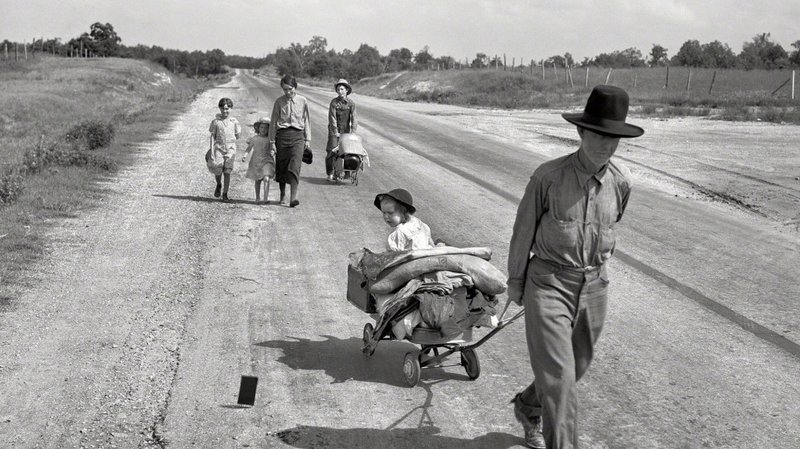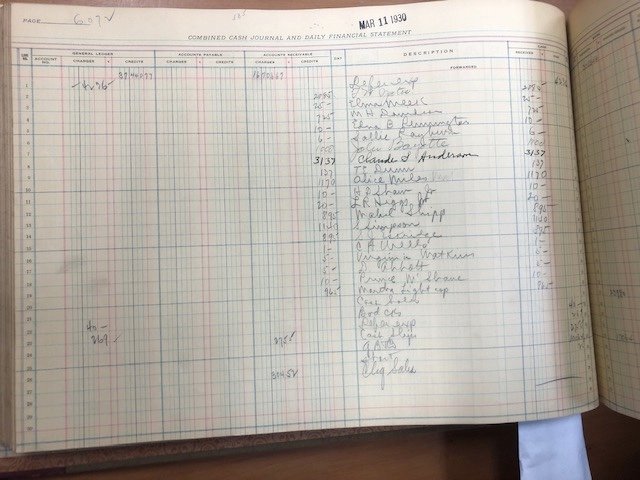Student Work
Great Migration
By: Anna Claire Pecunia

Desperate Times Call for Desperate Measures
The Great Depression took place during 1929-the late 1930’s. It was a worldwide depression that took place after the stock market crash. Stocks plummeted, banks closed, businesses went under, and families struggled to keep a roof over their heads. With a decade of sales in automobiles and housing dropping and riots outside every bank, the values of people seemingly vanished as they lost hope during the tumultuous decade. On top of that, domestic problems were not properly dealt with. Herbert Hoover, President at the time, did everything he could to pull our country out of this mess, but it seemed to be an impossible task. Everyone thought hope was lost for good.
As people started to lose their jobs, they migrated out west, since the south was being affected the most by this depression. Franklin D. Roosevelt was elected President in 1932 and created the New Deal. The New Deal consisted of many parts which helped the situation significantly. They were able to inspect banks to the government and gave the government power to close the banks that were failing. The historic sites helped to create new jobs. The government put people to work, although it was not until the 1960’s that funding for the jobs began to be provided. The Social Security Act and Fair Standards Act also were a part of the New Deal which helped citizens who had lost their jobs get new ones. In 1932, thirty thousand companies closed, resulting in countless jobs lost.[1]
When people who lived in the south lost their jobs, they often left to look for new opportunities, which resulted in The Great Migration. Southerners traveled up north to find work which also caused race riots. These riots took place because people were competing for jobs and housing. Families would even move in together so they could collectively save on rent and put food on the table since it was more economically efficient. Farmers were able to keep growing food and were able to trade food for their medical services. Small towns were able to work together to make do and take care of each other during this time.
The ledger from March 11, 1930, was the very start of the Great Depression right after the war.[2] It showed the names of people who would purchase necessities they needed. They made expensive purchases and spent too much money until it got to the point where they could not afford their debts. The majority of the purchases were most likely for food, cigars, and other necessities that families need to make due. As businesses started to close down, they knew if they did not use their money wisely, their families would starve. The Great Depression, being an awful time in our country and around the world, forced the people to work together and take care of each other. It is inspirational to think that even in the worst of times, the people stayed positive and made the best of the situation.
Ledger #39 March 11, 1930, Neilson’s Collection, Department of Archives and Special Collections, The University of Mississippi Libraries.

Ledger #39 March 11, 1930, Neilson’s Collection, Department of Archives and Special Collections, The University of Mississippi Libraries.
[1] Ted Atkinson . Faulkner and the Great Depression: Aesthetics, Ideology, and Cultural Politics. Athens: University of Georgia Press, 2006. https://muse.jhu.edu/
[2] Combined Cash Journal and Daily Financial Statement, 11 MARCH 1930, William Faulkner Collection, Neilson’s ledger #39 page 607, Department of Archives and Special Collections. The University of Mississippi Libraries.
